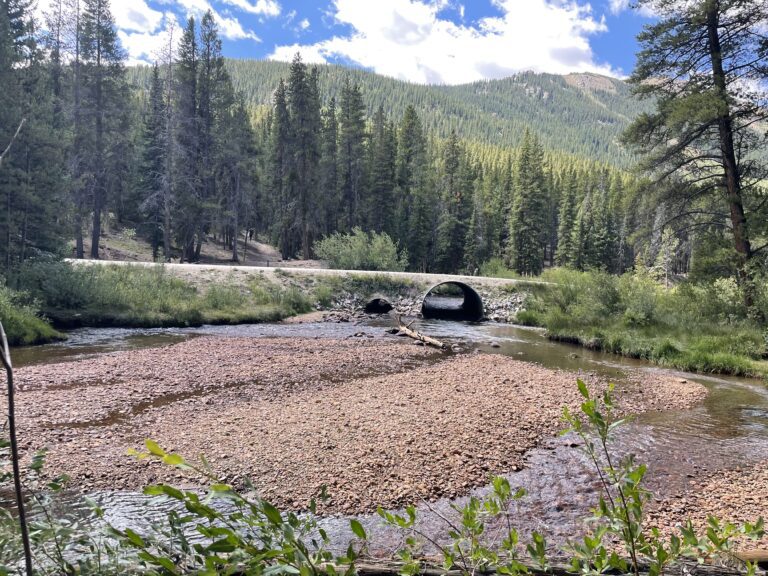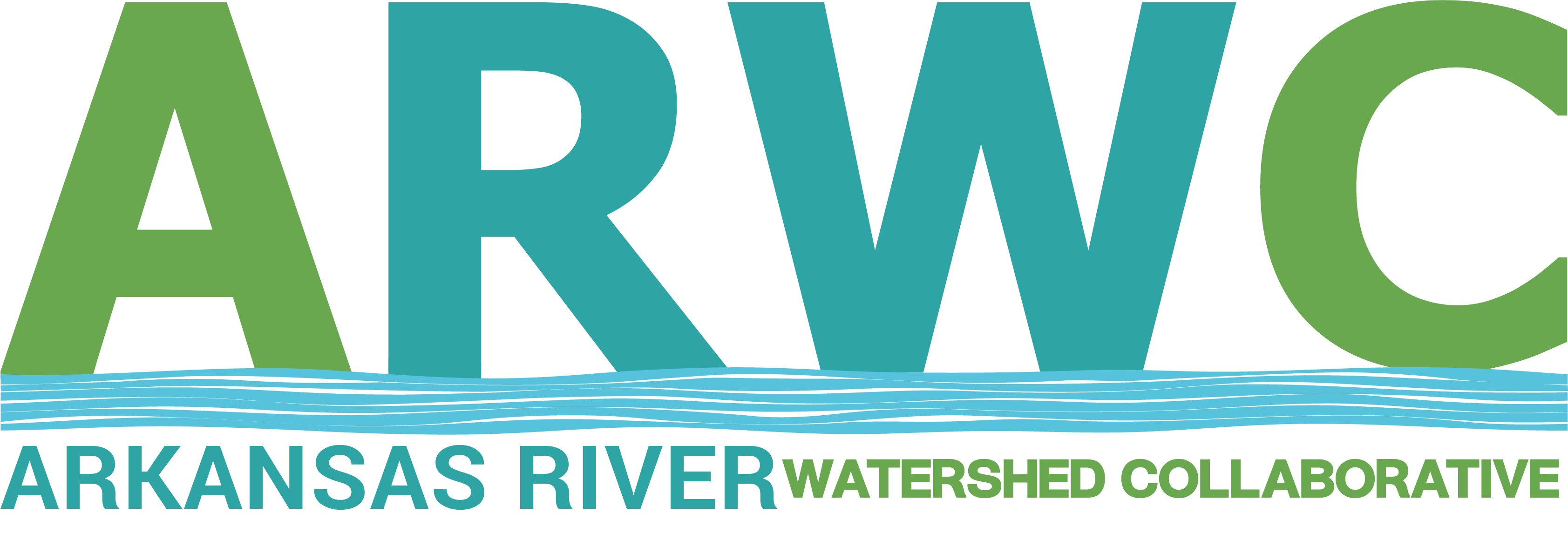Stream Restoration
Make a Donation
Explore the Projects
Bringing back the Rivers
Rivers in their natural state are beautifully complex, featuring a mosaic of curves, depths, and textures, from rapid flows to gentle ripples, and from rocky beds to sandy banks. This complexity is essential, it boosts floodplain connectivity, fosters a rich diversity of life, stabilizes riverbanks, minimizes erosion, and mitigates flooding risks.
Project Highlight
Replacing Culverts with Bridges in Lake County:
A Win for the Community, the Economy, and the Environment

Recreational Benefits
Bridges often include pedestrian paths, opening up opportunities for walking, biking, and fishing. The improved habitat created by bridges enhances the quality of fishing and other recreational activities along streams.

Ecological Benefits
Bridges support natural water flow, improving ecosystem connectivity and aiding migrating species like fish. Unlike culverts, bridges allow water to flow freely, reducing erosion, preserving the stream’s natural environment, and preventing blockages that can lead to flooding.

Safety & Durability
Bridges provide safer passage for both aquatic life and people. With clearer visibility for drivers, bridges reduce accident risks. Additionally, bridges are more durable than culverts, requiring less maintenance and proving more cost-effective over time.

Community Resilience
By protecting against flood damage and ensuring roads can withstand extreme weather events, bridges strengthen community resilience. The reduced maintenance needs of bridges also allow local agencies to focus on other important community projects.
The Challenge
Historically, infrastructure projects prioritized cost-efficiency and water management over the health of riparian systems. Narrow culverts were often used to channel water quickly beneath roads, but this has led to riverbank erosion, disrupted natural stream flows, and created barriers for aquatic life, particularly fish.
The rapid water flow also causes “downstream scouring,” where water exiting the culvert erodes the downstream area, leading to instability and further erosion both upstream and downstream. The sediment from this erosion can degrade the stream further.
To maintain water flow and protect roadways, maintenance crews frequently clear debris and sediment from these areas. However, these sites are often difficult to access, making it challenging for residents, maintenance crews, and emergency responders, especially during floods.
Our Strategy
AWRC is partnering with Lake County and the US Forest Service to replace seven problematic culverts in Lake County over the next five years. These culverts will be replaced with environmentally-friendly designs, such as bottomless arches and large box culverts, to support both aquatic life and proper sediment transport. We’ll also work on reducing erosion by rehabilitating surrounding habitats.
The selected project areas, impacted by past mining activities, are crucial for enhancing natural habitats and improving public access, especially during emergencies. Our efforts will benefit both the environment and public enjoyment, with places like Evans Gulch, Lake Fork of the Arkansas, and Halfmoon Creek showing significant improvements from previous collaborations. The new culverts will further enhance these areas, ensuring they remain beautiful and accessible for all.
Explore the Projects
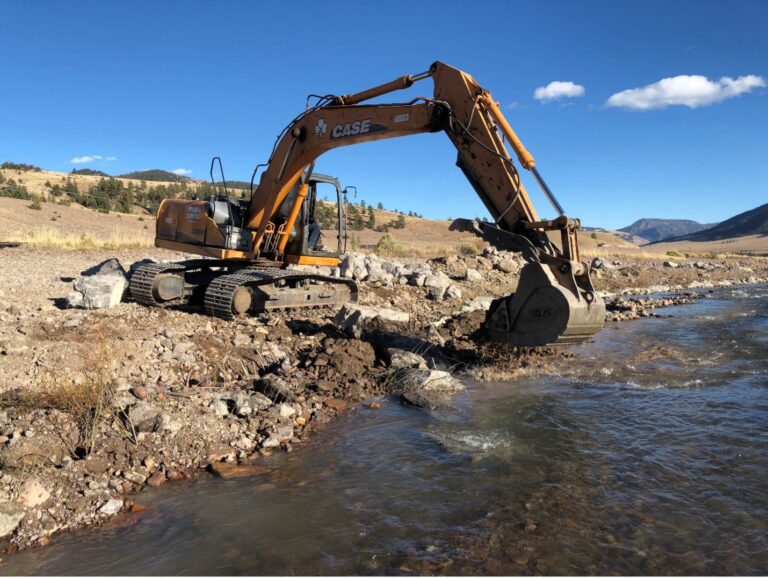
Recreating Meanders in the East Fork of the Arkansas River

Lake County Road 9 at Tennessee Creek

Lake County Road 3B at Evans Gulch
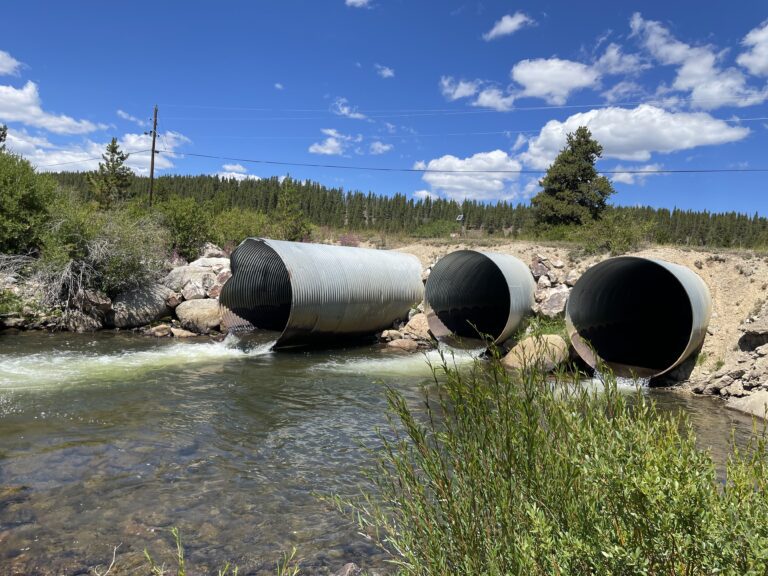
Lake County Road 4 at the Arkansas River
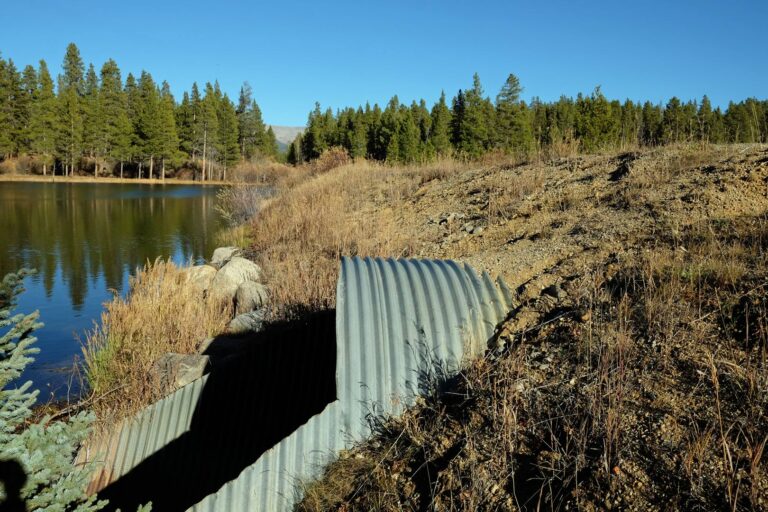
Lake County Road 5A at Lake Fork Creek
